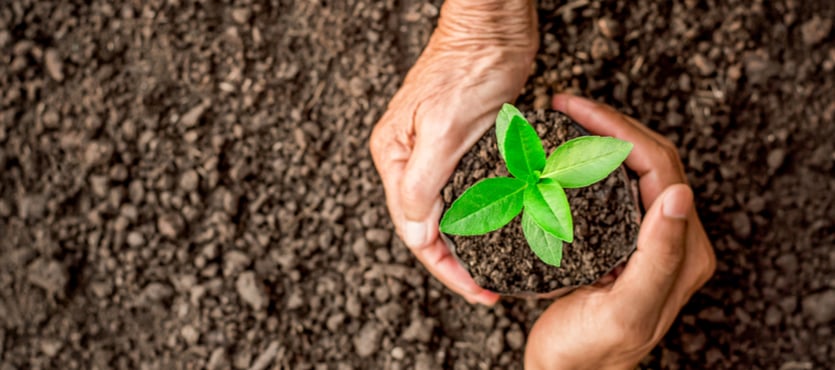While choosing the right planter for your plants and flowers is crucial, equally important is selecting the proper planter soil. Plants need not only sun and water to survive but all quality soil in which to thrive. With the soil and your choice of planters you can create the healthy environment your plants need. The team at TerraCast Products, leader in resin based products, offers these tips on choosing the best soil and the best planter for your gardening needs.
Types of Planter Soil
Soil, in general, is a combination of organic material and minerals. The most common soil minerals are sand, clay, and silt. The texture of the soil, its water absorption rate, its moisture retention rate, and the amount of nutrients it provides your plants is determined by the amount of each of these minerals in the selected soil. Let’s dig deeper.
- Sand soil is made of the largest particles, as well as the greatest amount of air and water between each particle. Soil with 50 percent sand dries out easily and warms up fast, making it the ideal soil choice when efficient drainage is required.
- Clay soil has the smallest soil particles and the lowest level of air and water between particles. Clay soil offers sufficient drainage and dries quickly, but warms up more slowly than sand or silt. When watered effectively, clay soil retains moisture well.
- Silt soil falls between sand and clay soil when it comes to space between particles and thickness. Silt soil is similar to clay soil, but with larger particles.
Generally, the best choice for soil features a mixture of all three – sand, clay, and silt – as each offers different benefits for your plants. A favorite combination among gardeners is loam which features 40 percent each of sand and clay, along with 30 percent silt.
Comparing Organic Potting Soils with Non-Organic Potting Soils
Because potting soils are prepared by a variety of companies, it can be challenging to decide which to buy. You obviously want to avoid soil options from a company whose only concern is the bottom line as these soils may be full of man-made fillers. When selecting your potting soil, check the bags for weight, as an overly heavy bag indicates too much moisture or too much sand, exactly what you do not want!
For comparison, let’s explore the most common options in potting soil – organic potting soils and non-organic potting soils. Organic potting soils are all-natural complete with microscopic organisms which make the soil long lasting and nutritious for your plants. On the other hand, non-organic potting soils are a blend of peat, hummus, manure, and the like. Non-organic soil contains nutrients that are man-made. As a result, non-organic soil must be replaced annually as the nutrients within are quickly absorbed during the growing season with little left behind to sustain the plants.
Choosing the Best Planters and Soil for Your Plants
When it comes to choosing the best soil for your plants, there are several crucial considerations like whether your plants enjoy dry or moist soil conditions and whether you live in a wet or dry climate. Once you chose the best soil based on the answer to those questions, you will need to select the best planters for your plants like the premium planters at TerraCast products. Large or small, classic to modern, as well as self-watering planters, TerraCast has the perfect planter in your choice of colors, styles, and textures to house your beautiful plants.
With your plants and flowers planted in the best soil and most attractive planters, you’ll need to water, feed, and care for your plants, but most importantly enjoy the beauty and joy they bring!

